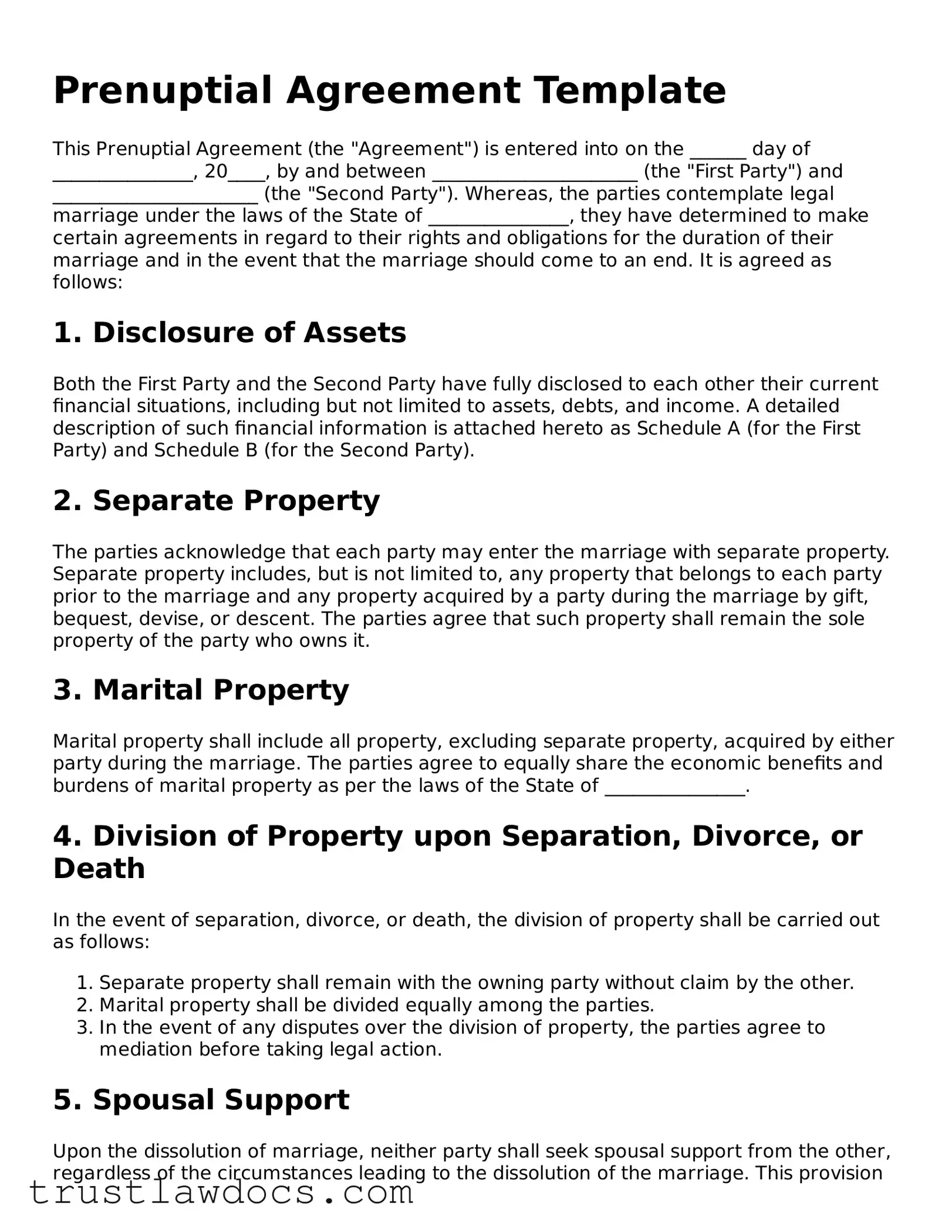Prenuptial Agreement Template
This Prenuptial Agreement (the "Agreement") is entered into on the ______ day of _______________, 20____, by and between ______________________ (the "First Party") and ______________________ (the "Second Party"). Whereas, the parties contemplate legal marriage under the laws of the State of _______________, they have determined to make certain agreements in regard to their rights and obligations for the duration of their marriage and in the event that the marriage should come to an end. It is agreed as follows:
1. Disclosure of Assets
Both the First Party and the Second Party have fully disclosed to each other their current financial situations, including but not limited to assets, debts, and income. A detailed description of such financial information is attached hereto as Schedule A (for the First Party) and Schedule B (for the Second Party).
2. Separate Property
The parties acknowledge that each party may enter the marriage with separate property. Separate property includes, but is not limited to, any property that belongs to each party prior to the marriage and any property acquired by a party during the marriage by gift, bequest, devise, or descent. The parties agree that such property shall remain the sole property of the party who owns it.
3. Marital Property
Marital property shall include all property, excluding separate property, acquired by either party during the marriage. The parties agree to equally share the economic benefits and burdens of marital property as per the laws of the State of _______________.
4. Division of Property upon Separation, Divorce, or Death
In the event of separation, divorce, or death, the division of property shall be carried out as follows:
- Separate property shall remain with the owning party without claim by the other.
- Marital property shall be divided equally among the parties.
- In the event of any disputes over the division of property, the parties agree to mediation before taking legal action.
5. Spousal Support
Upon the dissolution of marriage, neither party shall seek spousal support from the other, regardless of the circumstances leading to the dissolution of the marriage. This provision can be modified only by a written agreement signed by both parties.
6. Governing Law
This Agreement shall be governed by and construed in accordance with the laws of the State of _______________, without giving effect to any choice or conflict of law provision or rule.
7. Amendment and Revocation
This Agreement may only be amended or revoked by a written document signed by both parties and notarized. Any oral agreement to the contrary shall have no effect.
8. Acknowledgment
Each party acknowledges that he or she has had sufficient time to review the Agreement and consult with legal counsel and financial advisors of their choice. Each party further acknowledges that he or she enters into this Agreement voluntarily and without any coercion or duress.
Signatures
IN WITNESS WHEREOF, the Parties have executed this Agreement as of the first date above written.
First Party Signature: ________________________________________
First Party Printed Name: _____________________________________
Second Party Signature: ______________________________________
Second Party Printed Name: ___________________________________
Notary Public: ______________________________________________
My Commission Expires: ______________________________________
